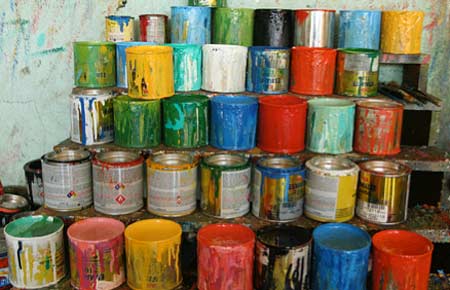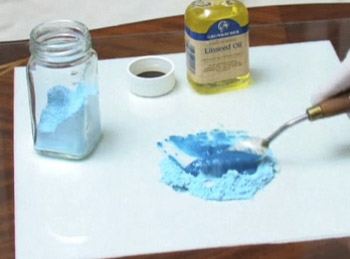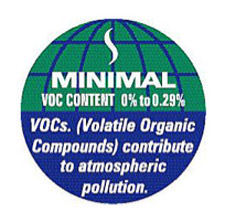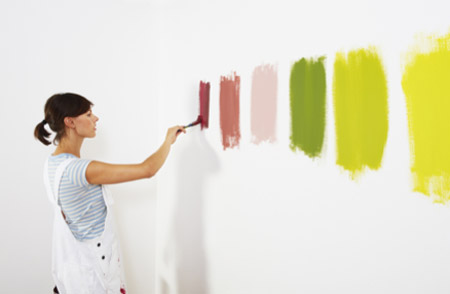Amid growing environmental concerns, even decorating choices matter. Traditional paints often harbour harmful chemicals and VOCs (Volatile Organic Compounds), which are extremely harmful to the environment and also your health.
Surprisingly, did you know that standard paint cans may contain formaldehyde, heavy metals, and VOCs, which are gases emitted by certain materials, often responsible for strong paint odours and are very harmful to your health.
With this in mind, opting to use eco-friendly paint is the way to go, find out all you need to below.
Why is Paint a Problem?
Redecorating might seem like a fairly harmless way to spruce up your home, however there are a few things to be aware of:
- Many paints use organic compounds from crude oil, contributing to the top 3 most polluting industries globally, releasing around 12% of toxic chemicals into the environment.
- The World Health Organisation reports that professional decorators are 40% more likely to develop lung cancer than the general population.
- Producing one litre of paint can result in up to 30 litres of toxic waste.
- Approximately 10% of purchased paint is never used, adding to waste concerns.
- While the paint industry claims that less than 3% of VOC emissions in Europe and less than 1% in the UK come from decorative paint, indoor concentrations can be highly concentrated, posing health risks.

Are you aware of what’s in your Paint?
Paint poses hazards at every stage: production is toxic, application can harm health, and disposal requires caution.
To grasp why paint presents these issues and how they might be addressed with eco-friendly alternatives, it’s crucial to understand the paint manufacturing process and where the harmful components lie.
In this context, “organic” compounds refer to those derived from crude oil, not sustainable sources, highlighting the environmental concerns.
Understanding Paint Composition
Paint typically consists of four main components:
- Pigment: Provides colour, often derived from metal compounds like titanium oxide for white or iron oxide for reds and browns. Mixtures create various colours and shades.
- Binder: Binds the pigment to the surface being painted and offers protection. Originally natural oils, now commonly synthetic plastics.
- Solvent: Thins the binder-pigment mixture for easy spreading, evaporating quickly to leave behind only binder and pigment.
- Additives: Enhance specific qualities like mould resistance, sunlight protection, water repellency, or texture durability.
To produce paint, pigments are sourced, ground, and mixed with binders and additives to achieve the desired consistency and colour. The mixture is adjusted until it reaches the right uniformity, then packaged for distribution.

Making Paint by hand – Image courtesy of Howcast
Decoding Eco-Friendly Paint
Eco or “Environmentally Friendly” paints boast certain environmental credentials, yet lack standardised criteria at present which ultimately leaves room for misuse. Key considerations when opting for eco paint are:
- Manufacturing Process: Assess if the process involves environmentally damaging practices, like mineral extraction or compound creation.
- Ingredients: Check for components that worsen air pollution or pose health risks.
- Health Concerns: Ensure hazardous compounds are regulated to acceptable levels.
- Transport Impact: Consider local manufacturers to reduce transportation emissions.
- Compromises: Be prepared for limitations in colour range, drying time, and higher cost.
Reading labels is crucial. Lack of standardised rules makes it necessary for you to discern what matters most to you.
Traditional paints often use toxic pigments like cadmium, lead, or chromium, whereas eco-friendly options favour natural or less harmful alternatives.
The binder, usually derived from crude oil, contrasts with eco-friendly choices which often use plant extracts, seed oils or even clay.
Solvents, necessary for thinning and quick evaporation, often contain Volatile Organic Compounds (VOCs), notorious for their strong odour and extreme health hazards.
VOC’s tend to make the paint stink – there’s a really popular post in our forum with a lot of discussion about stinky paint. There are also documented health issues and air pollution issues. You can find more information about this and the precautions that you should take in the HSE website.

Example of a VOC Paint label
EU regulations since 2004 (revised and tighten in 2007 and again in 2010) mandate VOC reduction, prompting paint manufacturers to seek safer alternatives. However, replacements like titanium dioxide (used as a whitener) remain contentious, so avoid if possible.
VOC content varies between brands and manufacturer, but will be indicated on a label on the product as follows:
- Minimal VOC: < 0.29%
- Low VOC: 0.3–7.99%
- Medium VOC: 8–24.99%
- High VOC: 25–50%
- Very high VOC: > 50%
Choose wisely; eco-friendly claims often hinge on low VOC content. Always scrutinise labels for accurate information.
While some paints prioritise a low carbon footprint, others utilise synthetic chemicals or animal-derived ingredients. Opting for plant-based, water-based paints offers a holistic eco-friendly solution.

Choosing an Eco Paint isn’t as easy as it sounds – Image courtesy of Elle Décor
Understanding Eco-Friendly Paint: Advantages and Drawbacks
Painting a room? Ensure proper ventilation to avoid exposure to harmful VOCs present in many paints. These chemicals can linger for years after application, posing health risks.
Opt for water-based or natural solvent-based eco paints to steer clear of toxic fumes. High-quality eco paints boast zero VOCs, ensuring a safer painting experience.
Consider the bigger picture; eco paint manufacturers prioritise eco-friendly processes, addressing packaging, energy consumption, and transportation impact.
Previously, eco paints were scarce, pricey, weren’t that great to use and lacked variety. Today, heightened environmental awareness has spurred advancements in eco paint technology to the point they’re every bit as good (if not better) than their less friendly counter parts.
Accessible in major DIY stores and online, eco paints now offer a wide range of colours and finishes, from matt emulsion to gloss and satinwoods.
Here’s a quick look at the pros and cons:
| Pros of Eco or “Green” Paints | Cons of Eco or “Green” Paints |
| Health Benefits – Especially vital for households with children or respiratory issues. | Longer Drying Times – Some paints take 12-16 hours to dry due to less volatile solvents. |
| Environmental Benefits – Eco-friendly manufacturing and materials. | Smaller Color Range – Limited availability of vibrant synthetic colours. |
| Performance Improvements – Drying time, durability, and colour fade are catching up. | Water Solubility – Can lead to quicker wear and tear. |
| Lighter and Easier to Transport – Premixed traditional paints are heavy. | Higher Price Tag – Extra processing increases costs. |
| Breathable – Synthetic products offer natural breathability. | Color and Consistency Issues – Local mixing may affect quality. |
| Easy Disposal – Natural ingredients simplify disposal. | Manufacturer’s Claims – Interpretation of “Eco” may vary. |
| Natural Pigments – Richer hues from natural sources. | Poor Coverage – May require additional coats. |
| Limited Access – Availability may vary. | |
| Usage Restrictions – Limited applications, e.g., lack of effective eco radiator paints. |
Top Tip: Test the paint in your home with a sample pot before committing to a full room. This is crucial with eco paint due to its unique properties.
Exploring Eco-Friendly Paint Brands
Interested in eco-friendly paints? Numerous companies specialise in eco and environmentally friendly paint options.
We have not used all paints listed here, as we’re usually directed by the client as to the paint they want to use, but this is some of the most popular and established suppliers that we have come across:
- Aglaia – Originating from Germany, Aglaia utilises only natural ingredients. Their versatile paint can be applied to various surfaces and offers a range of colours. Custom colour mixing available. naturalpaintsonline.co.uk

Aglaia Paints
- Auro – Auro produces paints using natural raw materials from environmentally managed sources. Their gloss paint is Ethical Consumer’s best buy. auro.co.uk

Auro Paints
- Colourtrend – An Irish paint producer specialising in acrylic paints for decorative purposes. Offers water-based, low VOC, and lead-free paint in over 13,000 colours and numerous finishes. colourtrend.ie

Colourtrend Paints
- Earthborn – Petrochemical-free and water-based paints carrying the EU eco-label flower accreditation. Available in various colours. earthbornpaints.co.uk

Earthborn Paints
- Eico – Manufactured in Iceland and Sweden using 100% geothermal or hydropower energy, making the production process carbon positive. eico.co.uk

Eico Paints
- Lakeland – Offers completely solvent and VOC-free paints for floors, woodwork, and walls. Extensive colour range available, with the ability to match existing colours. lakelandpaints.co.uk

Lakeland Paints
- Little Greene – Offers a range of environmentally friendly paints suitable for most interior and exterior applications. Water-based, quick-drying, child-safe finishes available. littlegreene.com

Little Greene Paints
- Edward Bulmer – They use renewable raw materials to create some the lowest possible carbon footprint paints. They also abide by the highest ethical trading standards. edwardbulmerpaint.co.uk

Edward Bulmer Paints
Proper Paint Disposal
Dispose of paint responsibly to protect the environment. Your local council can assist, but ensure the paint is fully dried to avoid odour issues, especially if it contains VOCs. Find disposal facilities using the government’s Waste Disposal Site Finder app.
Alternatively, donate excess paint to charities like Community RePaint, benefiting good causes.
As we have also mentioned, eco paint disposal is much simpler and more eco-friendly than other varieties.
Taking care of the environment is a critical concern today and one that everyone should be thinking about, so investing time into researching and finding eco-paints for your project is certainly a worthwhile endeavour.

